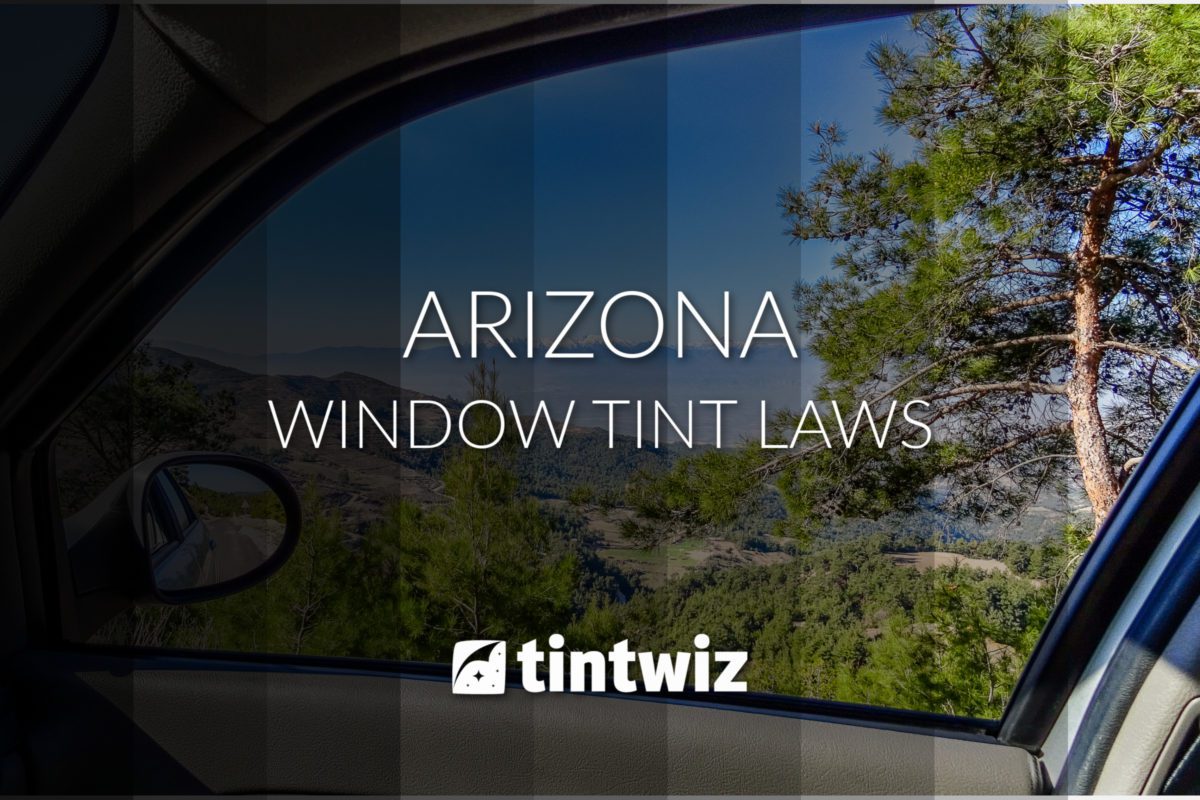Welcome to Xclusive Wraps and Tint, the ultimate destination for luxury vehicle care in Scottsdale, Arizona. If you’re wondering how to get a tint exemption in AZ, look no further. Our team of highly trained professionals is here to help you navigate the process and achieve the desired level of tint for your vehicle. With our expertise in vehicle wraps, tinting, and auto detailing, we are committed to providing exceptional quality and customer service from start to finish. From ceramic tint for superior heat rejection and UV protection to paint protection film (PPF) to safeguard your vehicle’s paint, we offer a comprehensive suite of services to meet your needs. Discover the difference of unparalleled service, quality, and expertise at Xclusive Wraps and Tint.
What is a Tint Exemption?
A tint exemption refers to the legal authorization that allows a vehicle owner to have darker window tints than what is typically allowed by state regulations. In the state of Arizona (AZ), a tint exemption allows vehicle owners to have darker window tints for certain medical conditions or circumstances. This article will provide an overview of what a tint exemption is, the eligibility requirements, the application process, the review and approval process, as well as the consequences of unauthorized tinting.
Definition of tint exemption in Arizona
In Arizona, a tint exemption is granted to individuals who require darker window tints due to medical conditions or specific circumstances. The exemption allows the vehicle owner to have window tints that are darker than what is normally allowed by state regulations. This exemption is regulated and overseen by the Arizona Department of Transportation (ADOT) and is subject to specific eligibility requirements.

This image is property of tintwiz.com.
Benefits of having a tint exemption
Having a tint exemption can provide several benefits to vehicle owners in Arizona. The primary benefit is increased privacy and protection from the sun’s harmful UV rays. The darker window tints can help reduce the glare and heat inside the vehicle, making it more comfortable to drive, especially in the hot Arizona weather. Additionally, for individuals with medical conditions, such as light sensitivity or skin conditions, the tint exemption can provide relief and enhance their overall well-being.
Eligibility for a Tint Exemption
To qualify for a tint exemption in Arizona, individuals must meet certain requirements. These requirements are in place to ensure that the exemption is given to those who genuinely need it and to prevent misuse of the privilege. The eligibility criteria for a tint exemption may include:
Requirements to qualify for a tint exemption
- Medical documentation: Individuals seeking a tint exemption based on medical conditions must provide proper documentation from a licensed healthcare professional. The documentation should clearly state the medical condition and the necessity for darker window tints.
- Approval from ADOT: The medical documentation must be reviewed and approved by the ADOT. They will assess the validity of the medical condition and determine whether a tint exemption is warranted.
- Other circumstances: In certain circumstances, individuals may also be eligible for a tint exemption, such as law enforcement personnel or individuals with specific security concerns. The eligibility requirements for these circumstances may vary and should be confirmed with the ADOT.
Applicable vehicles for tint exemptions
Tint exemptions can be granted for various types of vehicles, including personal cars, trucks, SUVs, and commercial vehicles. However, it is important to note that the eligibility requirements and limitations may vary depending on the type of vehicle and its specific use. It is recommended to consult with the ADOT or a qualified professional for guidance on the applicable vehicles for tint exemptions.

This image is property of tintwiz.com.
Application Process
Obtaining a tint exemption in Arizona requires following a specific application process. This process entails obtaining the necessary forms, completing the application accurately, and providing the required documentation.
Obtaining the necessary forms
To begin the application process, individuals can visit the ADOT website or contact their local ADOT office to obtain the required forms. The forms are typically available online and can be downloaded and printed for convenience. It is important to ensure that the most current version of the forms is obtained to avoid any delays or complications with the application.
Completing the application
Once the necessary forms are obtained, it is crucial to carefully and accurately complete the application. The application will typically require personal information, vehicle details, and specific information regarding the medical condition or circumstances that warrant the tint exemption. It is essential to provide all requested information and ensure its accuracy to avoid any potential issues during the review process.
Required documentation
Along with the completed application, individuals will need to submit the required documentation to support their eligibility for a tint exemption. This documentation may include:
- Medical documentation: For individuals seeking a tint exemption based on medical conditions, the required medical documentation from a licensed healthcare professional must be included. This documentation should clearly explain the medical condition and its impact on the individual’s need for darker window tints.
- Supporting documents: Depending on the specific circumstances, additional supporting documents may be required. For instance, for law enforcement personnel or individuals with security concerns, documentation proving their eligibility under those circumstances may be necessary. It is critical to review the requirements carefully and provide all requested documents to avoid any delays or denials of the application.
Submitting the Application
Once the application and all required documentation are completed, they must be submitted to the appropriate authority for review. The application can be submitted through various channels, such as mail or in-person submission.
Where to submit the application
Applications for tint exemptions in Arizona can be submitted either by mail or in-person at the ADOT office. The application should be sent to the address specified on the application forms or submitted to the designated office in person. It is recommended to check the ADOT website or contact their office directly for accurate and up-to-date information on submission methods and locations.
Processing time
After the application is submitted, it undergoes a review process by the ADOT. The processing time for the application may vary, depending on the volume of applications received and the complexity of each case. It is advisable to inquire about the estimated processing time during the time of submission to have a better understanding of when a decision can be expected.

This image is property of api.army.mil.
Review and Approval
The review and approval process for a tint exemption in Arizona involves the verification of application details and an inspection of the vehicle.
Verification of application details
Upon receiving the application, the ADOT will thoroughly review all the details provided to ensure their accuracy and compliance with the eligibility requirements. This verification process may include contacting the healthcare professional who provided the medical documentation and conducting any necessary investigations to confirm the legitimacy of the application.
Inspection of vehicle
As part of the review process, the ADOT will conduct an inspection of the applicant’s vehicle. The purpose of this inspection is to ensure that the vehicle meets the necessary safety requirements and that the window tints, once approved, comply with the established standards for tint exemptions. The inspection may involve checking the darkness of the existing window tints and ensuring they do not exceed the approved limit.
Decision on the tint exemption
After reviewing the application details and completing the vehicle inspection, the ADOT will make a decision regarding the approval of the tint exemption. If all the requirements are met, and the application is deemed valid, the tint exemption will be granted. The applicant will be notified of the decision in writing, and further instructions may be provided on how to proceed.
Receiving the Tint Exemption
Once the tint exemption is approved, the applicant will receive notification of the approval and an exemption certificate.
Notification of approval
The ADOT will notify the applicant in writing of the approval of the tint exemption. This notification may include details such as the approved level of darkness for the window tints and any additional conditions or restrictions that may apply. It is essential to carefully review the notification and keep a copy for future reference.
Issuance of exemption certificate
Along with the approval notification, the ADOT will issue an exemption certificate to the vehicle owner. This certificate serves as proof of the tint exemption and should be kept in the vehicle at all times. It may be necessary to present this certificate during interactions with law enforcement officers or other authorities to avoid any potential issues related to the window tints.

This image is property of res.cloudinary.com.
Maintaining the Tint Exemption
Once a tint exemption is granted, it is crucial to understand the requirements for maintaining it and ensuring compliance with the regulations.
Renewal process and timeline
Tint exemptions in Arizona are typically valid for a specific period, after which they need to be renewed. The renewal process may require submitting a new application, updated documentation, or undergoing a vehicle inspection to ensure continued compliance with the necessary requirements. It is important to keep track of the expiration date of the tint exemption and initiate the renewal process in a timely manner to avoid any lapse in compliance.
Reporting changes or modifications
If any changes or modifications are made to the vehicle’s window tints or its eligibility for the tint exemption, it is essential to promptly report these changes to the ADOT. This may include changes to the medical condition, changes in the vehicle’s ownership, or alterations to the window tints themselves. Providing this information ensures that the ADOT is kept up-to-date and can adjust the tint exemption accordingly.
Consequences of Unauthorized Tinting
It is crucial for vehicle owners in Arizona to understand the penalties and consequences associated with unauthorized tinting.
Penalties for illegal tinting
Using window tints that exceed the approved limits without a valid tint exemption is considered illegal in Arizona. The penalties for illegal tinting may include fines, vehicle impoundment, and citations. Additionally, the vehicle owner may be required to remove the illegal tints and replace them with compliant tints or face further consequences.
Enforcement and consequences
law enforcement officers in Arizona actively enforce the window tint regulations. They have the authority to conduct inspections and issue citations for non-compliance. Engaging in illegal tinting can result in increased scrutiny and potential legal consequences. It is essential to comply with the regulations and seek legal tint exemptions to avoid unnecessary fines or legal issues.

This image is property of tintwiz.com.
Frequently Asked Questions
To provide further clarity and address common concerns, here are some frequently asked questions about tint exemptions in Arizona and their answers:
Common questions about tint exemptions in AZ
-
Can I apply for a tint exemption for cosmetic reasons?
No, tint exemptions in Arizona are typically granted for medical conditions or specific circumstances, not for cosmetic reasons. -
How long does the tint exemption application process take?
The processing time can vary depending on various factors, including the volume of applications received and the complexity of each case. It is advisable to inquire about the estimated processing time during the application submission. -
Can I transfer a tint exemption to another vehicle?
Tint exemptions are generally associated with a specific vehicle and its owner. If the vehicle ownership changes, it is necessary to inform the ADOT and undergo the appropriate procedures to transfer the tint exemption.
Clarifications and additional information
For any additional questions or clarifications regarding tint exemptions in Arizona, it is recommended to contact the ADOT directly or consult with a qualified professional. They can provide accurate and up-to-date information specific to individual circumstances and ensure compliance with the regulations.
Conclusion
Complying with regulations and seeking legal tint exemptions in Arizona is of utmost importance. By understanding the requirements, eligibility criteria, application process, and consequences of unauthorized tinting, vehicle owners can ensure compliance and enjoy the benefits of approved tint exemptions. Remember to consult with the Arizona Department of Transportation or qualified professionals for accurate and personalized guidance throughout the process. At Xclusive Wraps and Tint, we are committed to providing luxury vehicle care services that comply with all legal requirements, including tint exemptions. Contact us today at (480) 849-8478 or visit our website at xclusivewrapsandtint.com to learn more about our services and how we can assist you.



